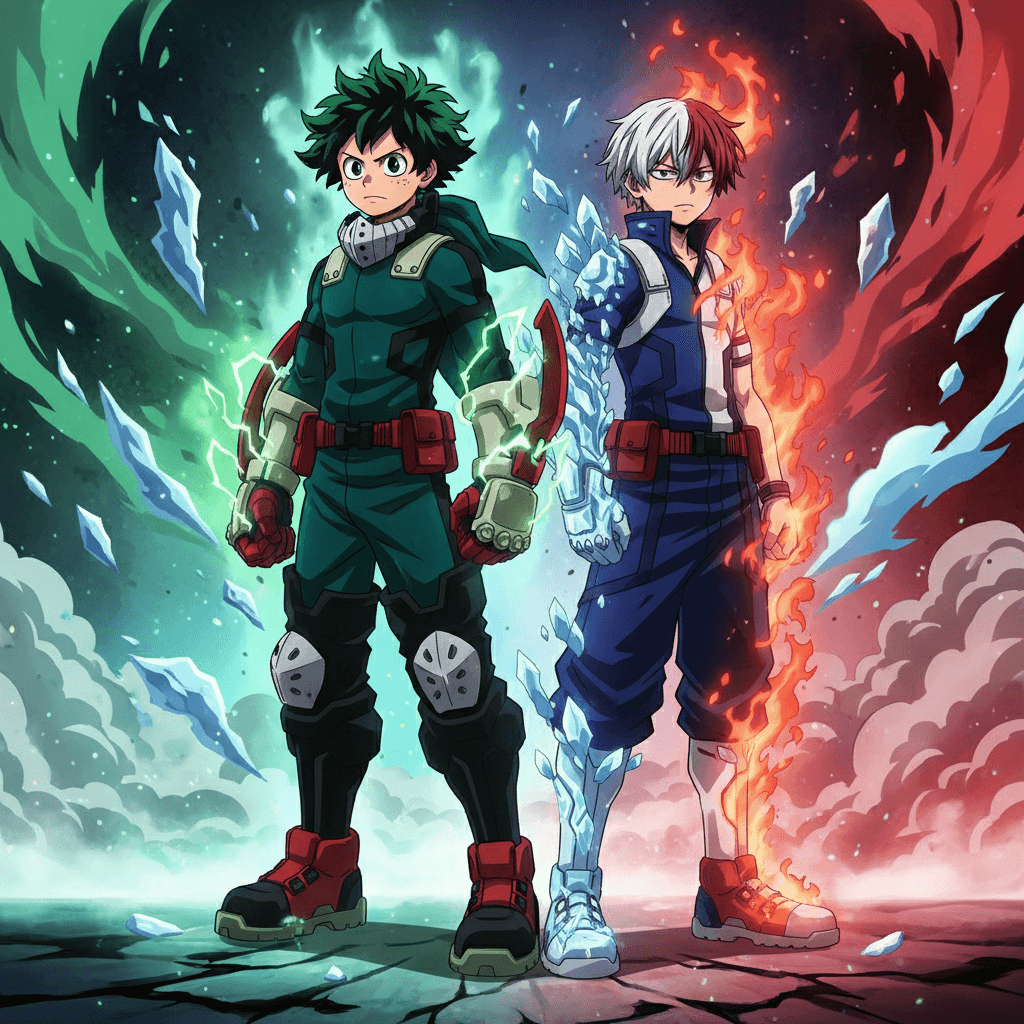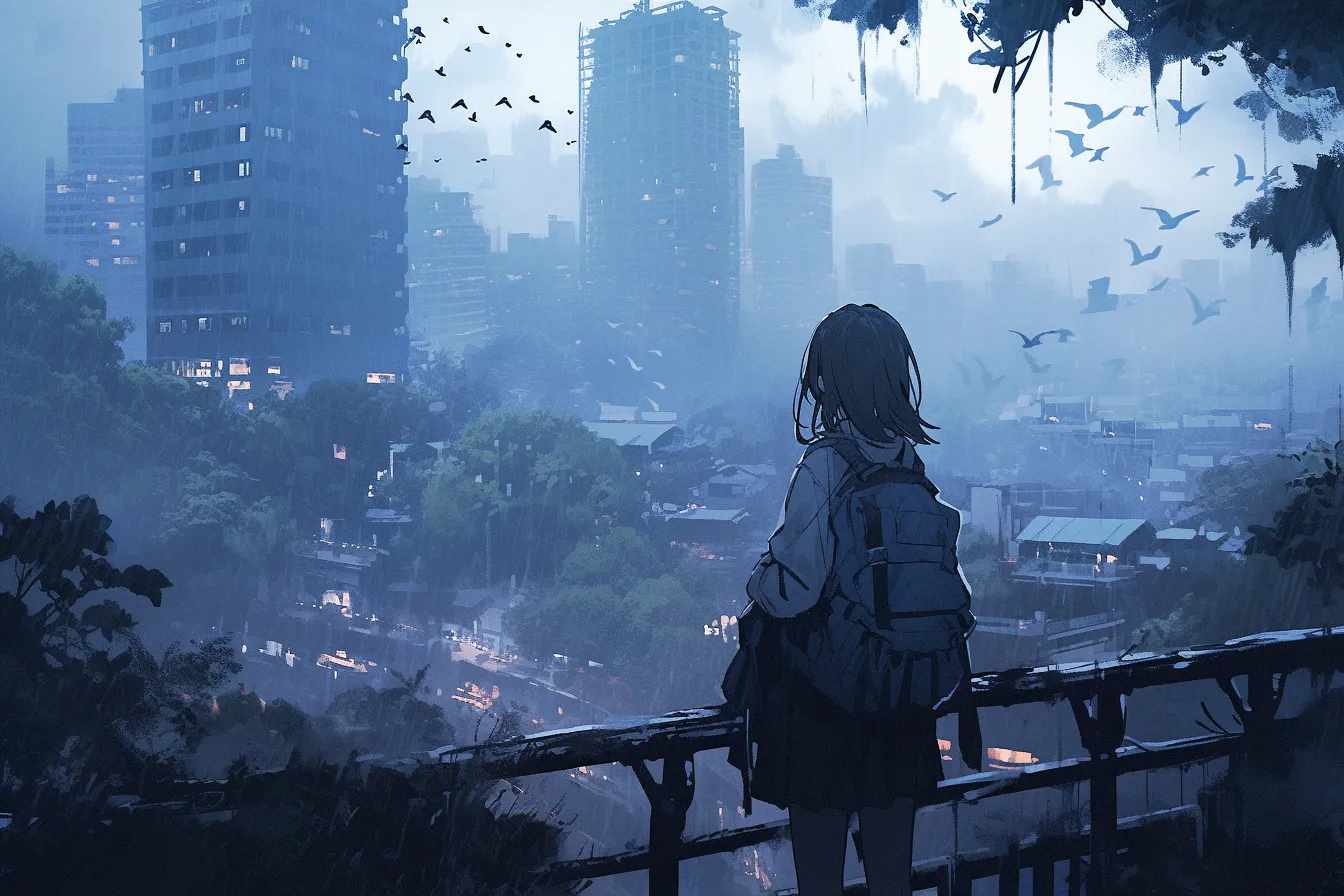Anime Style Revolution How Characters from My Hero Academia Redefine Fashion

A vibrant scene of Izuku Midoriya in his evolving hero costume, showcasing bold greens and reds, with Shoto Todoroki beside him, blending icy blue and fiery red aesthetics, symbolizing their unique quirks and growth from "My Hero Academia"
The Fashion Evolution in My Hero Academia
In recent years, the anime “My Hero Academia” has not only captivated audiences with its thrilling plot and dynamic characters but has also made significant strides in the realm of fashion. The unique styles of the characters play a crucial role in expressing their personalities, powers, and even their backgrounds.
Character Design and Individuality
One of the most striking aspects of “My Hero Academia” is its diverse cast of characters, each with distinct fashion choices that reflect their quirks and personal journeys. For instance, Izuku Midoriya, the protagonist, starts with a rather humble attire that mirrors his underdog status. As he evolves into a hero-in-training, his costume becomes more sophisticated and heroic, embodying his growth.
On the other hand, characters like Shoto Todoroki showcase a blend of traditional and modern aesthetics. His clothing often reflects his dual heritage—half icy blue and half fiery red—symbolizing his internal struggle between two powerful abilities. This duality is not just a visual cue; it resonates deeply with fans who appreciate the complexity behind his character.
The Influence of Superhero Culture
“My Hero Academia” draws heavily from Western superhero culture while adding its own unique twist. The outfits designed for heroes are reminiscent of classic comic book superheroes, yet there’s an added layer of creativity. Each hero’s costume incorporates elements that are functional for their specific powers, creating an intersection between practicality and style.
For example, All Might’s flamboyant outfit represents the epitome of heroism in Japan. His bright colors and bold design convey strength and optimism. This combination appeals to both traditional superhero imagery and modern Japanese aesthetics, making it relatable to a wide audience.
Fashion as a Narrative Tool
Fashion in “My Hero Academia” serves as more than just eye candy; it acts as a narrative tool that enhances storytelling. Characters’ outfits often foreshadow their development arcs or highlight their personal conflicts. For instance, villains like Tomura Shigaraki wear ragged clothes that signify chaos and destruction, while heroes sport polished ensembles reflecting hope and resilience.
Moreover, special events such as the U.A. Sports Festival showcase characters in various outfits designed for competition. These moments allow the creators to play with fashion trends within the anime world while keeping viewers engaged with character dynamics.
Cultural Impact
The influence of “My Hero Academia” extends beyond the screen into real-world fashion trends. Fans often emulate the styles seen in the show through cosplay or everyday wear. Online platforms buzz with discussions about character designs, showcasing how deeply intertwined fashion has become with fandom culture.
This fusion of anime style with everyday fashion opens avenues for designers to draw inspiration from these vivid characters. Collaborations between streetwear brands and anime franchises have become increasingly prevalent, further solidifying this connection.
Conclusion: A New Era of Anime Fashion
As “My Hero Academia” continues to evolve, so does its impact on fashion within anime culture and beyond. By redefining what it means to dress as a hero or villain, this series inspires creativity among fans and designers alike. Through innovative character designs that merge functionality with style, “My Hero Academia” sets new standards for how we perceive fashion in anime storytelling.
💬 The comment system is temporarily disabled.
If you have any questions, please contact us through other means.
